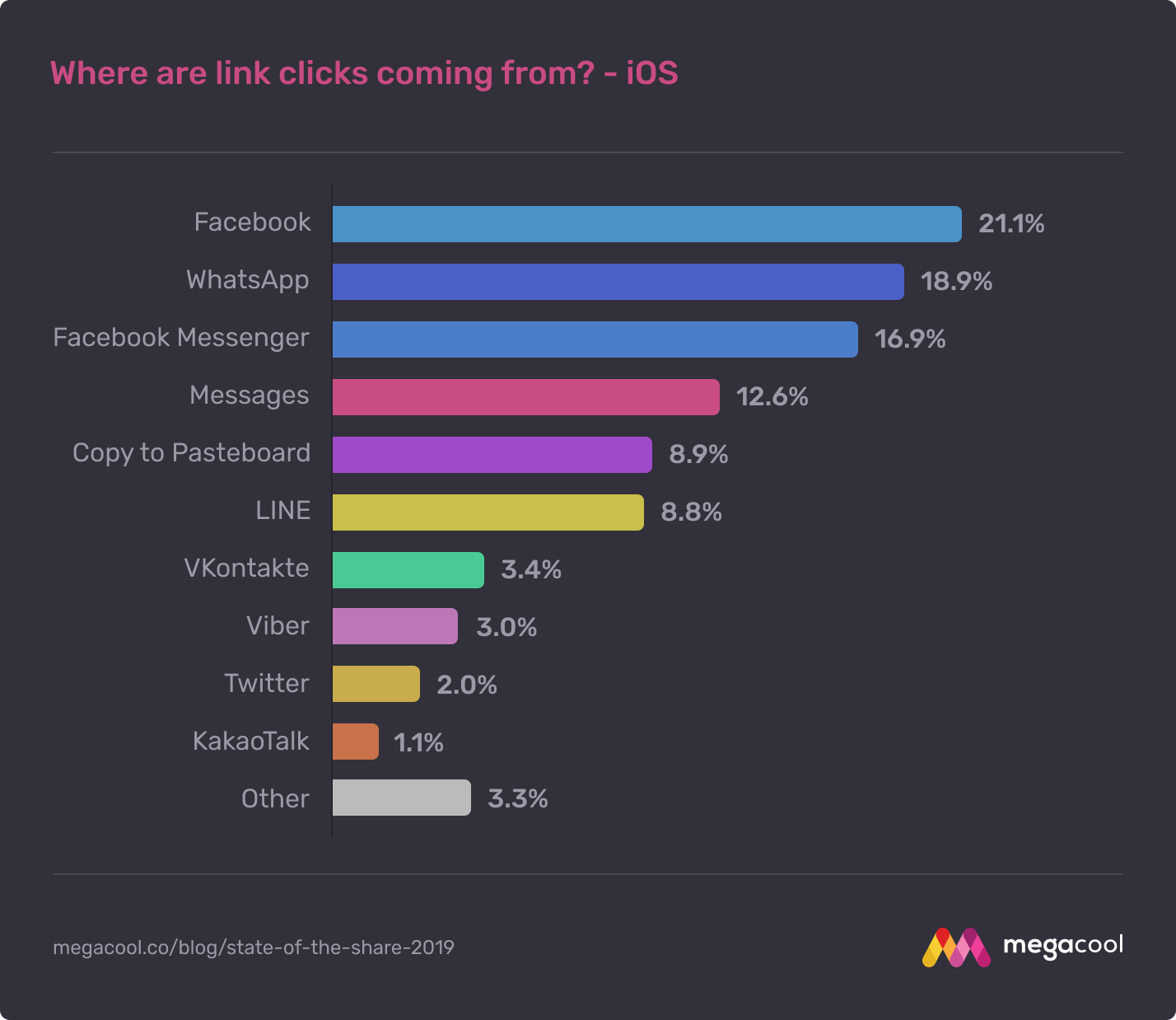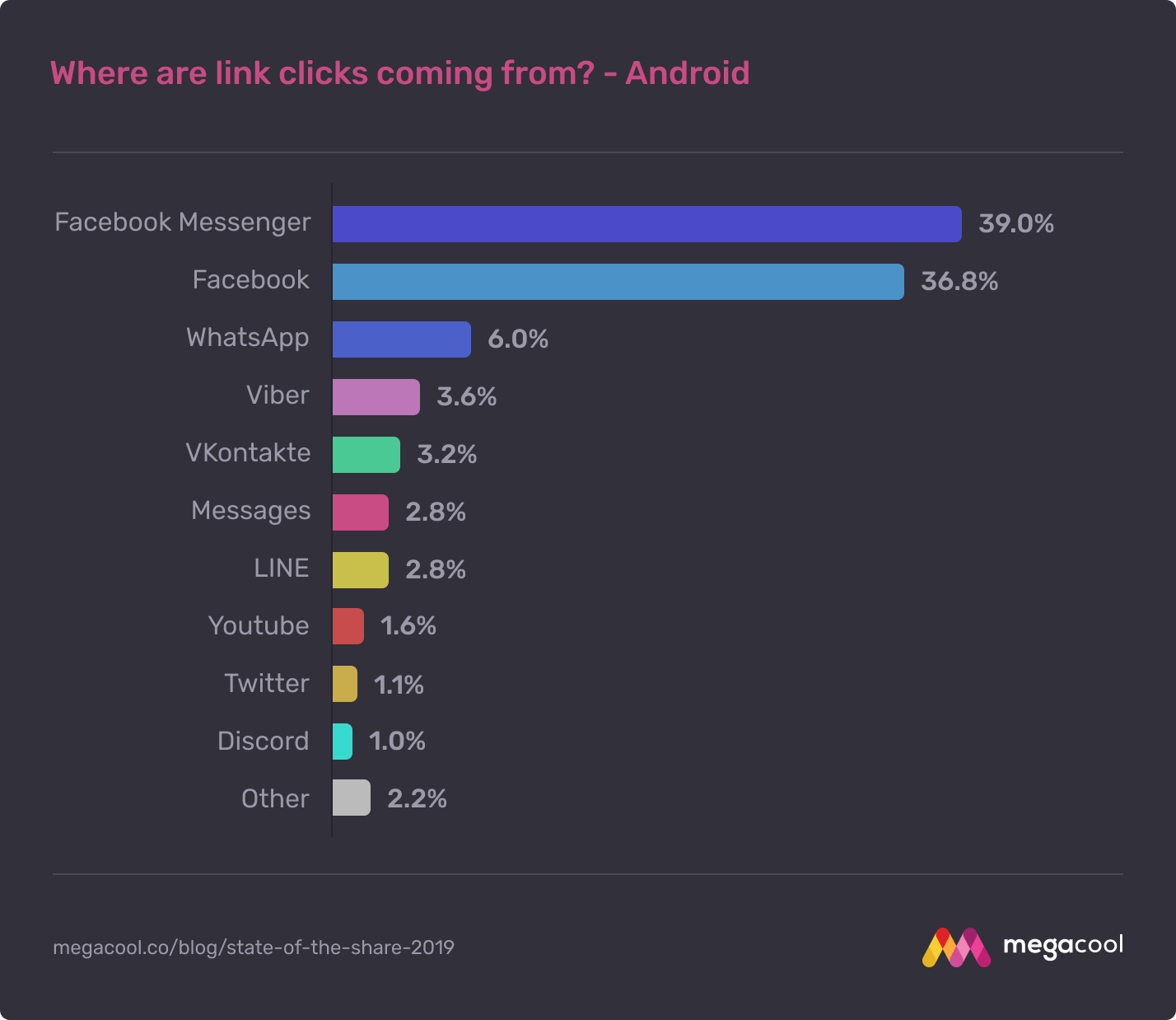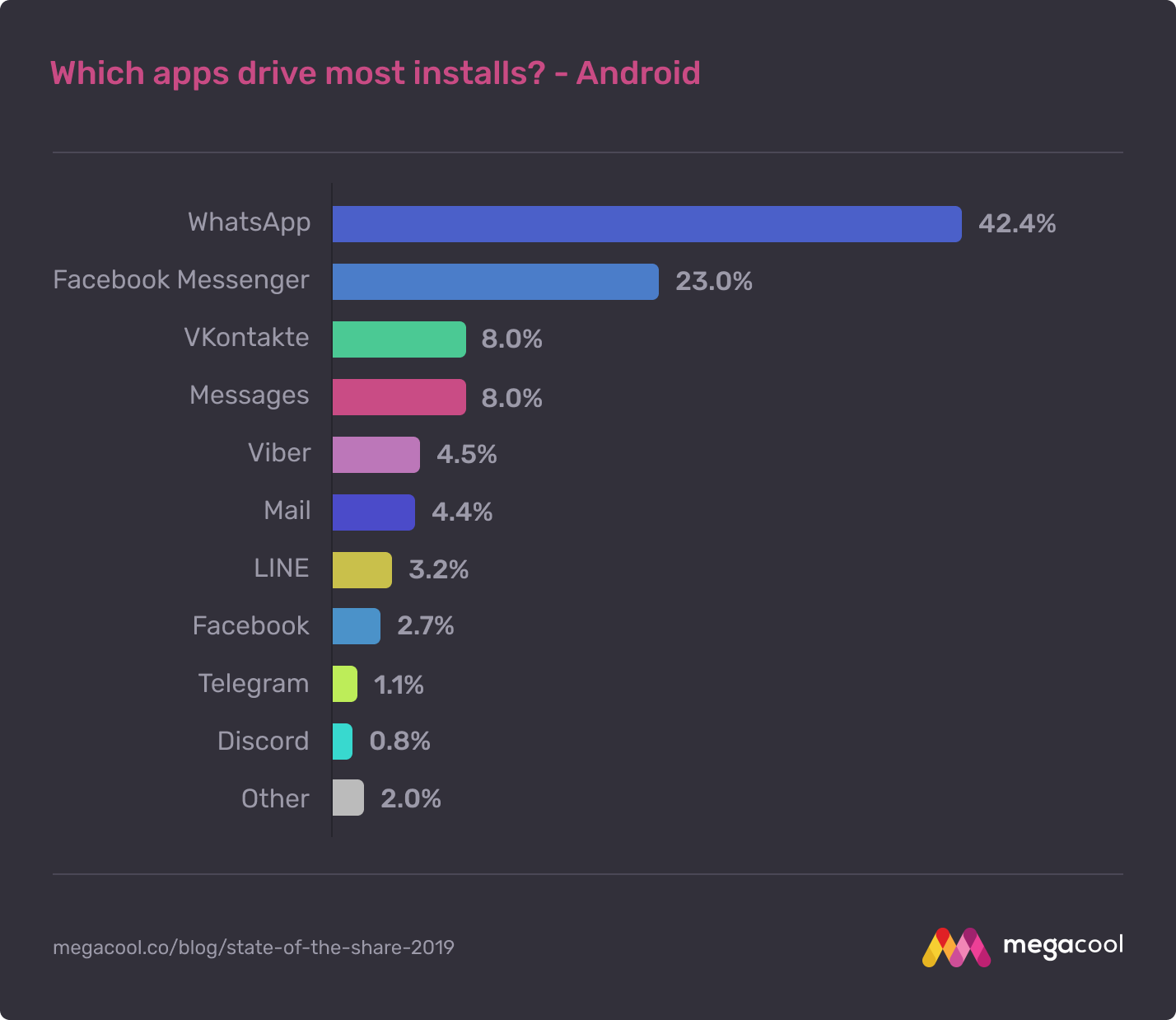Where are the players fumbling their achievements today? — Megacool research
Facebook and Twitter are no longer the most popular platforms for sharing information about games. Which sites meet the needs of gamers more, — says the marketing company Megacool.

The article was first published on the Megacool blog on March 15. We present its version in Russian.
Since time immemorial, people have sought to share their feelings, stories, and their success. Whether people spoke a primitive language or exchanged letters, the desire to share has always been in human nature.
Thanks to technology, sharing has become easier. So today, for any application developer or digital marketer, “sharing” is the main chapter in the manual.
From tweets about our records to challenges to game duels on Facebook, we shared content in 2019 more than ever. In this publication, we will use the information we have gathered while working with some top mobile game studios, and study the current state of mobile sharing.
We gathered together the data of millions of rummaged events from mobile games and came to unexpected conclusions. So let’s get down to them.
The most popular sharing apps Aren’t the ones you think they are
Given the 2 billion people who use Facebook every month, it’s easy to assume that the social giant is also the most popular platform on which players are willing to share, right?
It’s not like that at all. Yes, Facebook is still the king of social media, but it is no longer a place where gamers want to share their achievements, points and gaming failures. In fact, it is only in second place in terms of sharing on Android, and on iOS it is not even in the top five.
In addition to this, another leading social platform — Twitter — is in ninth place on iOS and is not even among the top ten most popular platforms for sharing on Android.
More and more players are turning to instant messengers to share their favorite gaming moments, instead of going to social media. In 2019, messengers are no longer a trend in the sharing market. They are this market.

Where People Fumble (iOS)
The rise of messengers
Messaging apps like WhatsApp or Apple’s iMessage are the most popular services that players come to to share something. According to our data, 70% of iOS-sharing and 54% of Android-sharing occurs on them.
Messengers have become a new way for players to share their achievements with friends. And it makes sense. In the modern world, we care more about the selection of the information we receive and the information we share with others.
There is a great social significance in getting personal recommendations from someone you know and trust. Equally, this social significance consists in being a person who has given good advice: you told someone that the game was cool, and they agreed with you.
Players turn into micro-influencers. The days when you spammed your latest gaming achievements on the entire Facebook feed have given way to a careful selection of the audience that you think will be most relevant.
In addition to messengers on iOS, two more types of applications are also popular among players: mail and those with which you can copy data to the buffer. This demonstrates the great desire of the players to control the place of sharing and its addressee.
Another suddenly popular app from the list that deserves attention is Reminder for iOS. It’s quite difficult to say what user behavior is behind it, but according to our hypothesis, players save content for themselves to write a review on it and share it later.
Android offers a greater variety of apps than iOS
On iOS, we analyzed data on 25 different apps that use the Megacool SDK, but on Android we had a larger sample of 155 apps. This can be seen by the dominance of the “Others” column in the table. Here users have a much wider choice.

Where people fumble (Android)
Why is there no YouTube and Instagram in the iOS chart?
It is significant that there are no such popular Android platforms as YouTube and Instagram in the list of iOS applications where people share information. YouTube on iOS for some reason has not integrated an extension that allows you to fumble videos. Perhaps this is an oversight on the part of Google, which thereby complicated the lives of those who wanted to share moments of their lives on YouTube.
As for Instagram, they included a similar extension in their iOS application, which made it possible to share, but imposed restrictions on the type of content, which made it impossible to fumble it there with Megacool. Speaking in detail, you can only share one piece of content on Instagram. The Megacool SDK uses the Apple-recommended approach of sharing complex content. This means that we include text, url, and gif in the content at once. Instagram should implement a similar approach that is used in most applications.
When it comes to sharing, which apps lead to the most clicks?
If marketing strategy A covers a thousand people, and marketing strategy B covers only one, it is logical to conclude that for further work it is necessary to choose strategy A. But how many people out of this thousand clicked the link? And how many of those who clicked actually downloaded the app?
When it comes to clicks, Facebook and the apps it owns dominate. Messengers have a lower level of clicks, but this is due to large volumes of sharing. When a link is shared in a communication app, it is usually clicked only once.
Up until this point, we’ve been talking about the power of messengers, but the graph below is a great example of the value that Facebook still represents for marketers who want to promote the game. The average Facebook user has 150 friends. This means that one Facebook share can reach hundreds or even thousands of people, especially if they share fascinating content, like videos or GIFs.

Where clicks come from (iOS)

Where clicks come from (Android)
Despite these impressive Facebook figures, our data shows that sharing in messengers also generates a lot of clicks. WhatsApp, Facebook Messenger, Messages and LINE together are responsible for 50% of clicks on iOS and Android.
Messengers have less reach, but they lead to more downloads
When you’re trying to promote a game, what matters is not how many people you reach, but whether you reach the right people and whether they download your game.
According to our data, messengers dominate social networks when it comes to increasing downloads.

Which apps generate the most downloads (iOS)

Which apps generate the most downloads (Android)
On Android and iOS, 80% of downloads from content sharing come from messengers [in fact, the figure is less, Megacool did not fully understand the functionality of VKontakte and considered it a messenger. — Ed.]. This means that developers will see the growth of organics, supporting sharing via WhatsApp, Messages and Facebook Messenger. This is also relevant with regard to re-engagement, which we will discuss below.
Which applications are the most effective in increasing downloads?
It is also important to keep track of which apps have the highest conversion from shares to downloads. We compared the conversion rate of each application with the average conversion rate and again found that messengers are much more likely to lead to installation.
Despite the fact that sharing on social networks has a much greater potential in terms of coverage, targeted sharing using a messenger gives a much higher conversion rate.
A great illustration of this is Messenger, an application from Facebook. The probability of downloading from a message in it is four times greater than the probability of downloading a post on Facebook itself.

Which apps are most effective in terms of increasing the number of downloads (Android)
As we have seen, messengers are responsible for the majority of gaming shares, so there is nothing surprising in the numbers. Now let’s take a look at which applications perform best in re-attracting users.
So what’s up with re-engagement?
It’s not just new downloads that matter to developers. We are increasingly seeing situations where a company spends most of its marketing budget on reactivating former users, realizing their high value (especially if we are talking about those departed users who made payments earlier).
Most companies try to get users back again with push notifications, but sharing can also be a powerful tool in returning players if friends tell each other about cool new content, events or sales.
Messengers are also more effective than social networks in terms of re-attraction.

Which apps generate the largest number of repeat engagements (iOS)

Which apps generate the largest number of repeat engagements (Android)

Which apps are most effective in re-engagement (iOS)

Which apps are most effective in re-engagement (Android)
This once again shows the power of curated personal messages before posts on social networks. When sending balls in the messenger, the player chooses a person who he believes may be interested in the content.
Within the framework of such a case, it may be a person who has previously played the game. And sharing can be what will encourage the player to return to the project again.
What are people fumbling and why?
There are several reasons why a player might fumble something. Here are the most popular reasons:
- the desire to show off an achievement;
- request for help;
- referral link;
- the desire to play together.
As for the content, this is usually:
- when something funny happens;
- almost lost, but still won;
- he lost, but he was not the cause of the defeat.
Conclusion
Quite a lot can be extracted from the data we have received. Including evaluating the power and influence of messengers when it comes to promoting the game:
- messengers are the most popular apps for sharing content;
- messengers are responsible for most of the downloads;
- messengers are responsible for most of the re-attracted users;
- messengers have the highest conversion from sharing to installation.
The massive reach of Facebook still allows you to generate a large number of clicks, but sharing, in which the user chooses a specific person to share information with him, leads to a much higher conversion of messengers.
Marketers should pay attention to the fact that so many players prefer to share content in messengers rather than on social networks. After all, this means that gamers are leaving social platforms, choosing a more personalized experience. They understand their role as micro-influencers within their own social groups and carefully choose what and with whom they share.
Methodology
The data was obtained from applications in which the Megacool SDK was integrated. The latter allows you to record gameplay on mobile devices and share it in GIF format.
A total of 4.5 million Android shares and 1.2 million iOS shares were analyzed in the period from October 2018 to January 2019.
Also on the topic:
